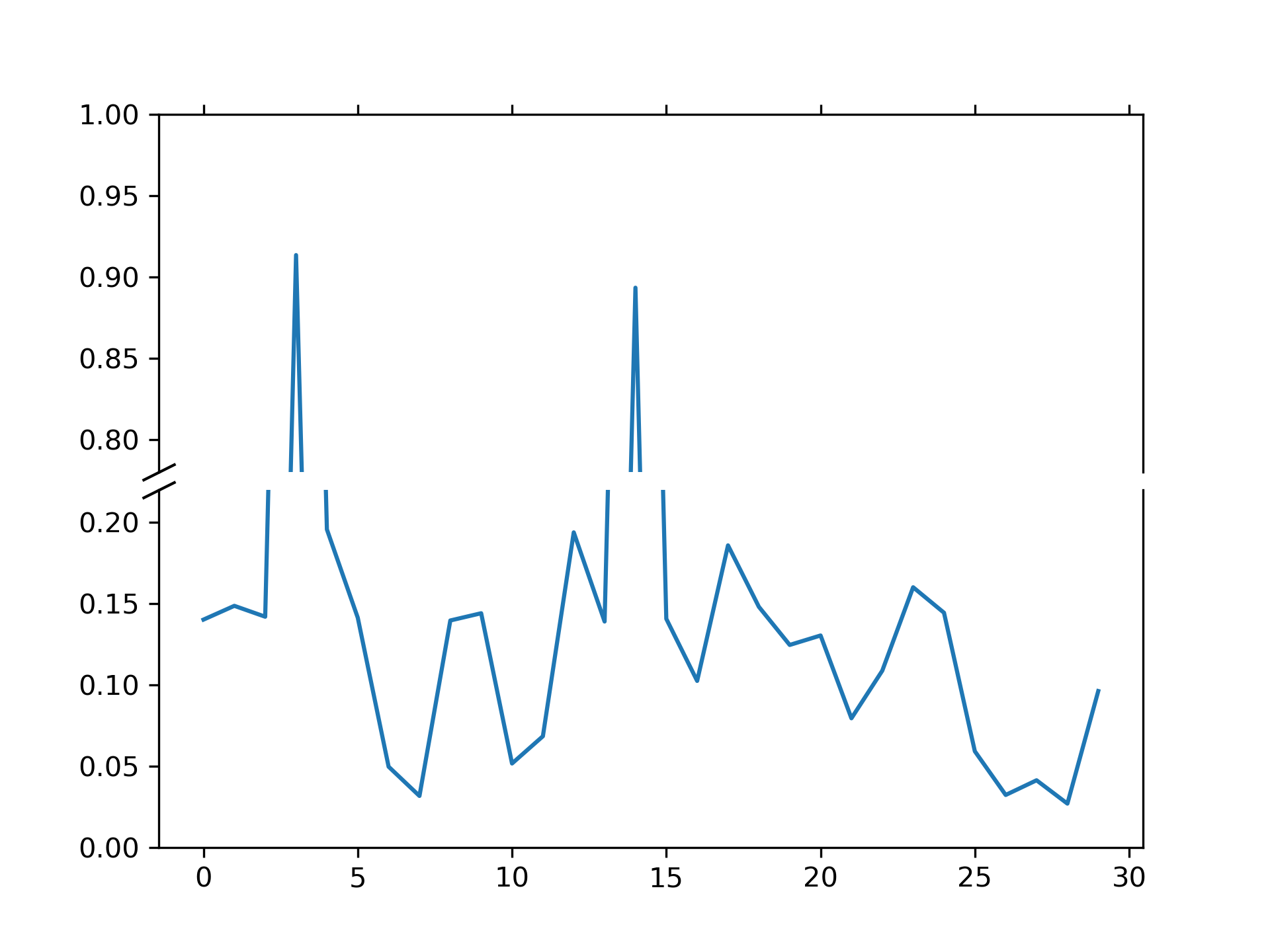>>> """
===========
Broken Axis
===========
Broken axis example, where the y-axis will have a portion cut out.
"""
...
... import numpy as np
... import matplotlib.pyplot as plt
...
... np.random.seed(19680801)
...
... pts = np.random.rand(30)*.2
... # Now let's make two outlier points which are far away from everything.
... pts[[3, 14]] += .8
...
... # If we were to simply plot pts, we'd lose most of the interesting
... # details due to the outliers. So let's 'break' or 'cut-out' the y-axis
... # into two portions - use the top (ax1) for the outliers, and the bottom
... # (ax2) for the details of the majority of our data
... fig, (ax1, ax2) = plt.subplots(2, 1, sharex=True)
... fig.subplots_adjust(hspace=0.05) # adjust space between axes
...
... # plot the same data on both axes
... ax1.plot(pts)
... ax2.plot(pts)
...
... # zoom-in / limit the view to different portions of the data
... ax1.set_ylim(.78, 1.) # outliers only
... ax2.set_ylim(0, .22) # most of the data
...
... # hide the spines between ax and ax2
... ax1.spines.bottom.set_visible(False)
... ax2.spines.top.set_visible(False)
... ax1.xaxis.tick_top()
... ax1.tick_params(labeltop=False) # don't put tick labels at the top
... ax2.xaxis.tick_bottom()
...
... # Now, let's turn towards the cut-out slanted lines.
... # We create line objects in axes coordinates, in which (0,0), (0,1),
... # (1,0), and (1,1) are the four corners of the axes.
... # The slanted lines themselves are markers at those locations, such that the
... # lines keep their angle and position, independent of the axes size or scale
... # Finally, we need to disable clipping.
...
... d = .5 # proportion of vertical to horizontal extent of the slanted line
... kwargs = dict(marker=[(-1, -d), (1, d)], markersize=12,
... linestyle="none", color='k', mec='k', mew=1, clip_on=False)
... ax1.plot([0, 1], [0, 0], transform=ax1.transAxes, **kwargs)
... ax2.plot([0, 1], [1, 1], transform=ax2.transAxes, **kwargs)
...
...
... plt.show()
...

